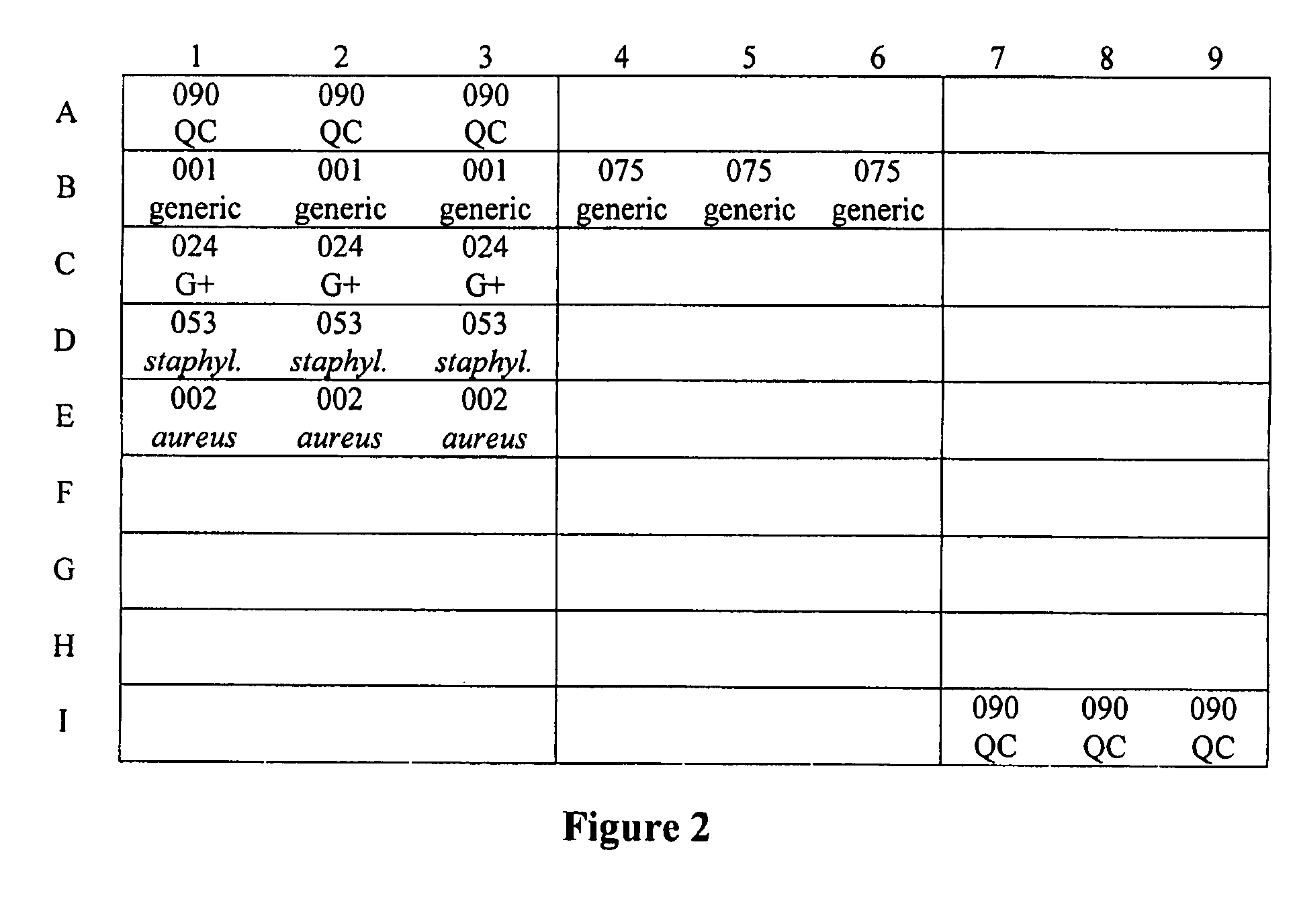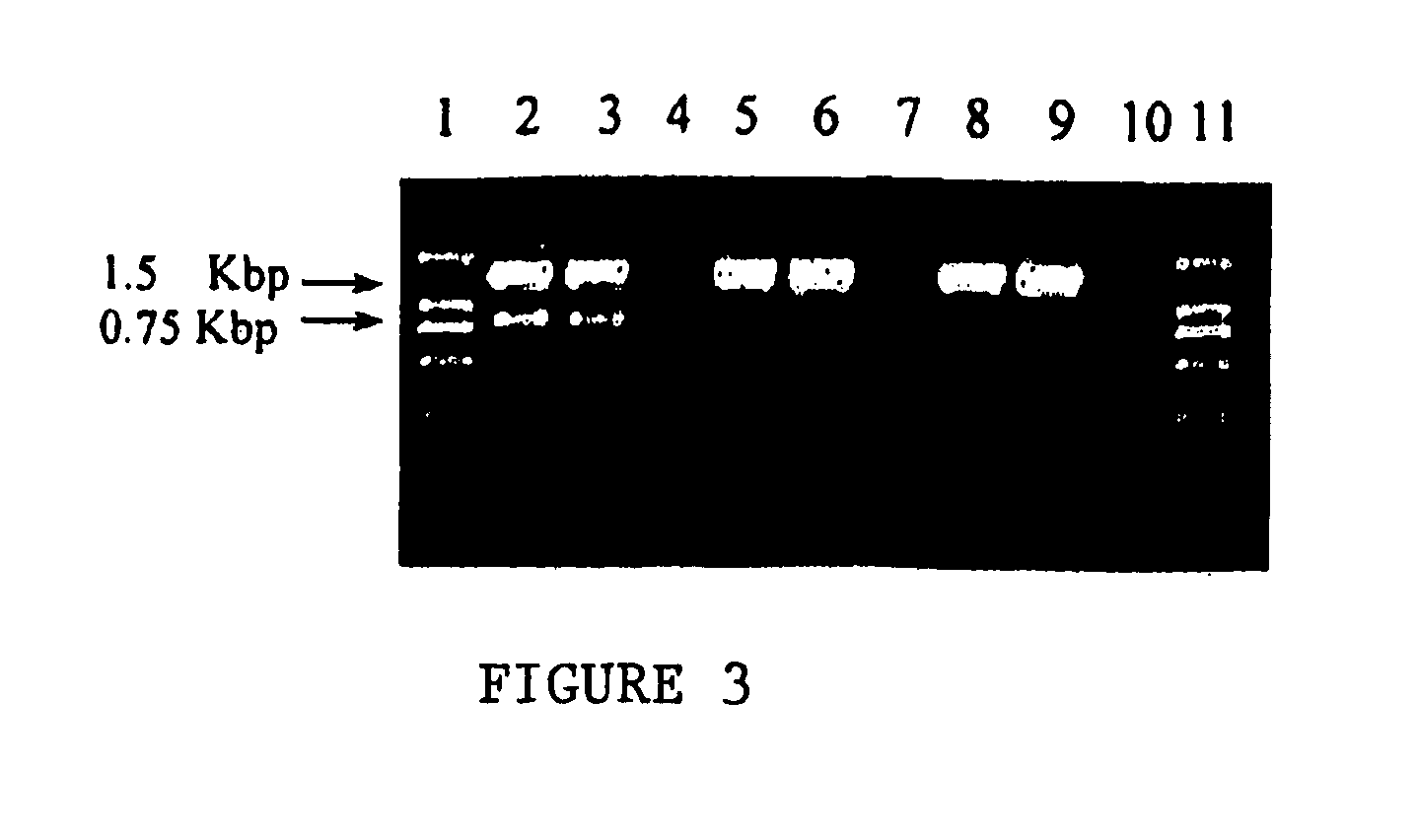Asymmetric PCR amplification, its special primer and application
a technology of asymmetric pcr and primers, applied in the field of pcr amplification, primers, etc., can solve the problems of low specificity, unsuitable for gene mutation analysis, restriction endonuclease, etc., and achieve the effect of low amplification efficiency, low possibility of interference among the different primers, and similar amplification efficiency for these primer pairs
- Summary
- Abstract
- Description
- Claims
- Application Information
AI Technical Summary
Benefits of technology
Problems solved by technology
Method used
Image
Examples
example 1
Single Asymmetric PCR Amplification and its Application in Determination of Gram-Positive Bacteria on Gene Chips
[0046]1. Gene Specific Primers for PCR Amplification and Various Oligonucleotide Probes
[0047]Both primers and probes were synthesized by Shanghai Boya Biotechnology Company. Certain primers having at their 5′ end a TAMRA fluorescent label and probes having at their 5′ end a modifying amino group were also provided by Shanghai Boya Biotechnology Company.
[0048]The target sequence for gene specific primers was bacterial 16S rRNA gene. The amplification fragment was about 1.5 kb. The categories of the primers as well as their oligonucleotide sequences are provided in Table 1.
[0049]
TABLE 1PCR primers for bacteria determinationPrimer No.Primer CategoryPrimer SequencePMB-0408047Generic PrimerTAMRA-GGTTTCGGATGTTACAGCGT (SEQ ID NO. 1)PMB-0201034Gene specificTAMRA-AGAGTTTGATCCTGGCupstream primerTCAG (SEQ ID NO. 2)without a tailPMB-0201002Gene specificAAGGAGGTGATCCAGCCdownstream(SEQ ...
example 2
Detection of Bacterial Drug Resistance Genes Using Multiplex Asymmetric PCR Amplification and Gene Chips
[0078]Both primers and probes were synthesized by Shanghai Boya Biotechnology Company. Certain primers having at their 5′ end a TAMRA fluorescent label and probes having at their 5′ end a modifying amino group were also provided by Shanghai Boya Biotechnology Company.
[0079]The categories of the gene specific primers, sequence information, target gene, and length of the amplified fragment are shown in Table 7. Each target gene has two probes, the sequence information of which is shown in Table 8. Among these, target genes tetK and tetM were tetracycline-resistant genes from gram-positive bacteria. Target genes ermA and ermC were macrolide-lincosamide-streptogramin B resistant genes from gram-positive bacteria. A section of the universal bacterial 23 rRNA gene was used as an internal control in order to monitor the PCR amplification and hybridization processes.
[0080]
TABLE 7Primers f...
PUM
| Property | Measurement | Unit |
|---|---|---|
| pH | aaaaa | aaaaa |
| temperature | aaaaa | aaaaa |
| volume | aaaaa | aaaaa |
Abstract
Description
Claims
Application Information
 Login to View More
Login to View More - R&D
- Intellectual Property
- Life Sciences
- Materials
- Tech Scout
- Unparalleled Data Quality
- Higher Quality Content
- 60% Fewer Hallucinations
Browse by: Latest US Patents, China's latest patents, Technical Efficacy Thesaurus, Application Domain, Technology Topic, Popular Technical Reports.
© 2025 PatSnap. All rights reserved.Legal|Privacy policy|Modern Slavery Act Transparency Statement|Sitemap|About US| Contact US: help@patsnap.com



